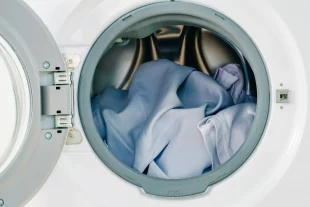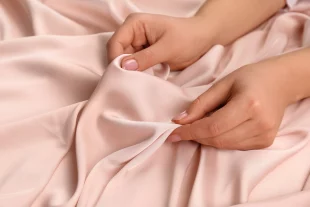 Get How-To's
Get How-To'sHow-To's
Laundry Color Guide: How to Separate Laundry and Sort Clothes

Laundry Color Guide: How to Separate Laundry and Sort Clothes
Sorting laundry is an essential practice that is often overlooked in the quest to maintain vibrant and long-lasting clothing. Not only does proper sorting preserve the appearance of your garments, but it also promotes environmental responsibility and contributes significantly to the lifespan of your clothes.
This guide will provide you with step-by-step instructions on how to sort your laundry correctly, so your clothes remain bright and like-new for years to come. You will learn about sustainable practices that benefit your wardrobe and align with eco-conscious living.
The Necessity of Laundry Sorting
It’s important to sort your laundry before washing in order to preserve the quality and longevity of your clothes. This practice goes beyond just preventing minor appearance issues, as it helps to prevent damage to your garments. Failing to sort your laundry can result in color bleeding and fading, which can permanently damage the look of your wardrobe.
Sorting your laundry may seem like a small and insignificant task, but it is actually essential for maintaining the quality and longevity of your clothes. By separating your laundry into different loads based on color, fabric, and level of dirtiness, you can ensure that each item is washed in the most appropriate way. This not only helps to keep your clothes looking bright and new but also extends their lifespan, making laundry sorting an important part of responsible garment care.
Items Needed for Laundry Sorting
To ensure efficient laundry sorting, it’s important to gather all the necessary items before beginning. This includes laundry baskets, mesh bags for delicate items (recommended but optional), pre-treatment solutions, a range of detergents, and any other laundry materials that you may need to make the process smoother. Once you have everything you need, you can then follow the step-by-step instructions for sorting your laundry.
Step-by-Step Instructions for Laundry Sorting
Step 1: Check the Label
To start your laundry sorting journey effectively, it is important to carefully read the labels on your clothes. These labels contain important information regarding the care instructions for the fabric. Although this guide provides general tips, it is crucial to follow the specific care instructions on each garment’s label for best results.
When washing clothes made of a blend of fabrics, it is important to follow the care label that has the most cautious instructions. Additionally, you should create a barrier around any delicate items in your load to provide extra protection. By taking this meticulous approach, you can ensure that your clothes are sorted properly and receive the tailored care they need to stay in great condition through every wash cycle.
Step 2: Sort by Color
Going beyond the conventional whites-and-darks paradigm, elevate your laundry sorting prowess by considering the nuanced spectrum of colors. Organize clothes not only by the broad categories of whites, lights, brights, and darks but also by delving deeper into shades. Create distinct piles that reflect the subtle variations within each color category.
The attention given to laundry sorting goes beyond the mundane task of separating clothes. It is an art that ensures each category of clothing is treated with a specialized approach during the washing process. This guarantees that the colors remain vivid and do not fade away from their original form.
Step 3: Sort Laundry by Fabric Type
It’s important to be mindful of how you sort your laundry. Don’t just separate clothes by color, but also consider the type of fabric. This extra step can help preserve the quality of your clothes. For example, heavier fabrics can cause damage to delicate items in the wash. To avoid this, categorize your clothes into groups such as heavy-duty fabrics (like denim), everyday wear fabrics, and delicate items like wool or silk.
It is equally important to also to pay attention to the labels on your clothes and treat any delicate laundry items marked “hand wash” or “dry clean only” accordingly. By following these steps, your clothes will look and feel their best for longer.
Sorting Different Fabric Groups
- Sheets and Bedding: sheets and comforters, contemplate the use of a high-capacity washer, ensuring a meticulous wash that aligns with fabric specifics. Towels should be sorted not just by color but with an additional consideration of the warmest water setting suitable for the fabric.
- Delicate Fabrics: Thin fabrics like silk necessitate careful handling, possibly through hand washing or delicate dry cleaning. To provide an extra layer of protection, employ mesh bags during washing, allowing the delicate items to dance through the cycle with grace.
- Dark Jeans: Lightly soiled jeans, akin to solo performers, demand a stage of their own. Wash them in isolation, inside out, with a delicate or gentle cycle, and use the cold water setting to prevent any unnecessary shrinkage.
- Wool Wisdom: Wool, known for its warmth and comfort, requires special attention. Follow care labels diligently, and be mindful of potential shrinkage. Delicate items like wool sweaters deserve a gentle cycle and cold water to maintain their original form.
Step 4: Separate Stained and Heavily Soiled Laundry
Conduct a detailed assessment of your garments, transforming the sorting process into an art of stain eradication. Identify stains, dirt, or heavy soiling, setting aside these items for a pre-treatment spectacle. Utilize pre-treatment solutions, turning the laundry process into a prelude to stain removal excellence.
Begin by examining each garment closely, paying careful attention to areas prone to stains. Whether it’s a wine spill on a favorite shirt or grass marks on your child’s play clothes, discerning the nature of the stain sets the stage for targeted treatment. As you inspect, consider the fabric type and the specific characteristics of each stain. Different fabrics demand distinct approaches, and stains vary in composition, requiring tailored interventions.
If stains are found, use a specialized stain-fighting agent. Apply it strategically to ensure deep penetration into the fibers. Stains that once posed a threat are now engaged in a battle they are destined to lose. This pre-treatment spectacle not only enhances the efficiency of stain removal but also minimizes the environmental impact of harsh chemicals during the main wash.
By addressing stains head-on before the bulk of the washing process, you reduce the reliance on aggressive detergents and contribute to a more sustainable laundry routine.
Step 5: Separate New Clothes and Brightly Colored Laundry
When it comes to washing new clothes, taking extra care during the initial washes can help to ensure that they maintain their vibrancy and don’t bleed dye onto other items in the wash. Separating clothes not only by color but also by fabric type and other sorting criteria can help to prevent damage to delicate fabrics and preserve the integrity of the clothing.
When washing unique items such as cheesecloth, it’s important to treat them with extra care as they can be easily damaged or shrink in the wash. Taking the time to sort clothes carefully can transform your laundry routine into an art form, allowing you to orchestrate each wash cycle like a symphony of care.
By treating your new clothes with the attention they deserve, you’ll be able to enjoy their vibrancy and freshness for longer, ensuring that they remain a valuable part of your wardrobe for years to come.
Color Bleeding Woes: Can It Be Fixed?
Color bleeding, that unexpected crossover of hues during a wash cycle, can be disheartening. The good news is that, in some cases, there are steps you can take to rectify the situation and salvage your garments.
If you notice color bleeding while the clothes are still wet, act promptly. Remove the bleeding garment from the load to prevent further spread. For garments affected by color bleeding, a retrospective soak can be beneficial. Fill a basin or sink with cold water and add a cup of salt. Submerge the stained garment and allow it to soak for at least 30 minutes. The salt helps set the color and may prevent further bleeding.
Another ally in the battle against color bleeding is white vinegar. Create a mixture of cold water and vinegar (one part vinegar to two parts water) and let the garment soak for an hour. The acidity of vinegar can sometimes help remove excess dye. Going forward, consider using color-catching sheets in your laundry. These sheets are designed to absorb and trap loose dyes, preventing them from redepositing onto other garments.
While the effectiveness of these methods can vary depending on the fabrics and dyes involved, taking swift action and experimenting with these remedies may help salvage your clothes from the clutches of color bleeding. Remember to always check care labels and test any solutions on inconspicuous areas before applying them to the entire garment.
Laundry Sorting Conclusion
Mastering the art of sustainable laundry habits goes beyond the act of washing; it begins with meticulous laundry sorting. By following these comprehensive step-by-step instructions, you ensure the longevity and vibrancy of your clothes and contribute to a more sustainable and eco-friendly lifestyle by minimizing clothing and textile waste.
For those seeking professional laundry care that aligns with sustainability, CD One Price Cleaners stands as a trusted partner. With a commitment to quality practices and expertise in handling various fabrics, CD One Price Cleaners ensures your garments receive the care they deserve.
How to Separate Laundry and Sort Clothes Video
We think you may like
 Get How-To's
Get How-To's Get How-To's
Get How-To'sHow to Wash Silk
 Get Garment Guides
Get Garment Guides
